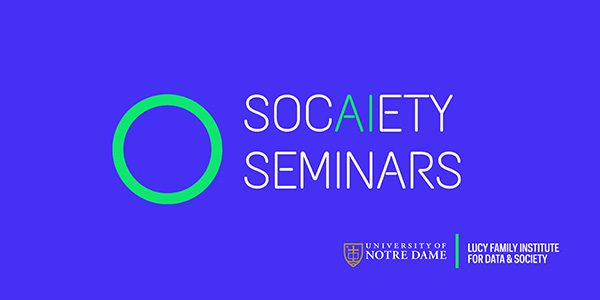Purifying Water With the Power of the Sun
A Notre Dame researcher’s invention could improve access to clean water for some of the world’s most vulnerable people.
“Today, the big challenges are information technology and energy,” says László Forró, the Aurora and Thomas Marquez Professor of Physics of Complex Quantum Matter in the University of Notre Dame’s Department of Physics and Astronomy. “But tomorrow, the big challenge will be water.”
The World Health Organization reports that today nearly 2 billion people regularly consume contaminated water. It estimates that by 2025 half of the world’s population could be facing water scarcity. Many of those affected are in rural areas that lack the infrastructure required to run modern water purifiers, while many others are in areas affected by war, natural disasters or pollution. There is a greater need than ever for innovative ways to extend water access to those living without power, sanitation and transportation networks.
Recently, Forró’s lab developed just such a solution. They created a water purifier, described in the Nature partner journal Clean Water, that is powered by a resource nearly all of the world’s most vulnerable people have access to: the sun.
The key component in Forró’s system is titanium dioxide, a readily available material known for its light scattering properties. In one form, it is a pigment that lends some paints and toothpastes their distinctive “titanium white” color. It also serves as the active ingredient in sunscreens, absorbing light before it reaches the skin.
Titanium dioxide can also react to light in another way: by producing highly reactive forms of oxygen called “free radicals.” These free radicals are capable of destroying the parasites, bacteria and viruses found in contaminated water.
Forró and his colleagues realized that if they could produce a large enough quantity of titanium dioxide in nanowire form, they could find a way to use it to purify water. The nanowires were about 10 nanometers in width, around one 6,000th the width of a human hair. The catch was that most labs could only create a few grams of nanowires at a time. However, Forró and Endre Horváth, a chemist, pioneered a new process that generated titanium dioxide nanowires in a large quantity, yielding a kilogram (more than 2 pounds) at a time.
With larger quantities of titanium dioxide nanowires at their disposal, Forró and his colleagues were able to form new composite materials. They mixed the nanowires with nanotubes made of carbon in suspension to form a kind of mesh. They drained the mesh and thinned it using a blade until it was thinner than a sheet of copier paper. Then they heated the material until its components fused together to form a membrane they could use as a filter.
To build a purification system, Forró’s team sandwiched the filter between panes of glass and created an entrance at the top of one end and an exit at the bottom of the opposite end. They speculated that water flowing into the device would be purified by three distinct processes running in parallel to one another. One is mechanical filtration. The filter material would block larger particles from passing through the paper. At the same time, the sunlight would interact with the titanium dioxide to produce free radicals and destroy any microbes present in the water. Simultaneously, the sunlight would warm the filter paper and the surrounding water, pasteurizing it and further ensuring that any harmful microorganisms had been destroyed. Then the purified water could pass out of the device ready for consumption.
With their prototype fully assembled, Forró and his colleagues could subject it to a series of tests. One involved water from a nearby river. They tested the water for E. coli before and after filtration and found that the device was capable of completely eradicating any E. coli from the water. They also tested the device on water mixed with a “cocktail” of nine different pollutants. These included drug residues, pesticides, maintenance products, hormones, and cosmetics. They found that the filter’s three-part sanitation process removed significant portions of even these pollutive molecules from water.
While Forró’s initial work on his filtration system began at his former institution, the Swiss Federal Institute of Technology in Lausanne, he is continuing to develop and refine it in his new role as the inaugural director of the Stavropoulos Center for Complex Quantum Matter at Notre Dame. Working with chemists, he is developing more advanced processes for creating nanowires and is working with the IDEA Center at Notre Dame to explore potential commercial applications. He is also exploring modifications that would make the filter more efficient.
“Now one device can sanitize two liters of water a day,” he says. “That is enough for one person’s drinking water, but what about other people and other uses like cooking and washing? We think larger filters and larger scale applications will add greater benefits.”
Forró says that the lesson he hopes other researchers take from his experience developing the device concerns the value of thinking in new ways across traditional disciplinary boundaries.
“This work includes advancements in physics,” Forró said. “We have to understand properties of titanium dioxide nanowires at a fundamental level. But there is also materials science: How can we make them into filters, and what is the best way of processing them? And there is biology and biochemistry. Breakthroughs come about when we work across specialties and learn each other’s vocabularies.”
Forró offers as an example his collaboration with a biologist who was examining the protein polymer microtubules that play a major role in cell division. Forró had the technique, which he had elaborated by measuring carbon nanotubes, and the biologist had the knowledge of how to make microtubules in the laboratory. It took time, but eventually they published a seminal work on the complexities and mechanical properties of microtubules.
For Forró, working in a broad and interdisciplinary way also means staying attuned to the world’s greatest problems and using science to serve society.
“This is an example of an advancement in basic science that also has a practical application,” he said. “It is not science for science’s sake. It is science that is engaged in society, and that is something that continues to guide all of our work going forward.”
Forró’s ongoing work to develop his solar water purification device is supported by the Stavropoulos Center for Complex Quantum Matter.
Originally published by Brett Beasley at research.nd.edu on March 17, 2023. To learn more, please visit their website.
March 17, 2023


